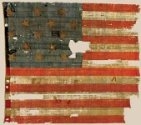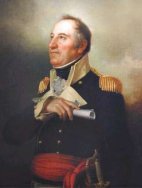
Worksheets and No Prep Teaching Resources
Reading Comprehension Worksheets
The War of 1812

The War of 1812
 Worksheets and No Prep Teaching Resources Reading Comprehension Worksheets The War of 1812 |
 The War of 1812 |
| edHelper's suggested reading level: | grades 9 to 12 | |
| Flesch-Kincaid grade level: | 7.49 |
|
No Supper in Baltimore - The Invasion of Baltimore, Part 2
By Toni Lee Robinson |

|
 1 The invasion of Baltimore was underway. Unknown to the British, local scouts watched and reported on the advance of the British troops. U.S. Brigadier General Stricker was fully aware of Ross's every move. He had been deployed by General Sam Smith to engage the British forces and delay their advance long enough for the city's defenses to be completed. Stricker had established his line across Long Log Road, in the path of the British advance. Troops and six cannons stood ready and waiting for the enemy.
1 The invasion of Baltimore was underway. Unknown to the British, local scouts watched and reported on the advance of the British troops. U.S. Brigadier General Stricker was fully aware of Ross's every move. He had been deployed by General Sam Smith to engage the British forces and delay their advance long enough for the city's defenses to be completed. Stricker had established his line across Long Log Road, in the path of the British advance. Troops and six cannons stood ready and waiting for the enemy. |
Create Weekly Reading Books
Prepare for an entire week at once! |
| Leave your feedback on No Supper in Baltimore - The Invasion of Baltimore, Part 2 (use this link if you found an error in the story) |
 |
The War of 1812
|
 |
High School Reading Comprehensions and High School Reading Lessons
|
 |
United States
|
|
|
 | Fifty States Theme Unit |
 |
Document Based Activities |